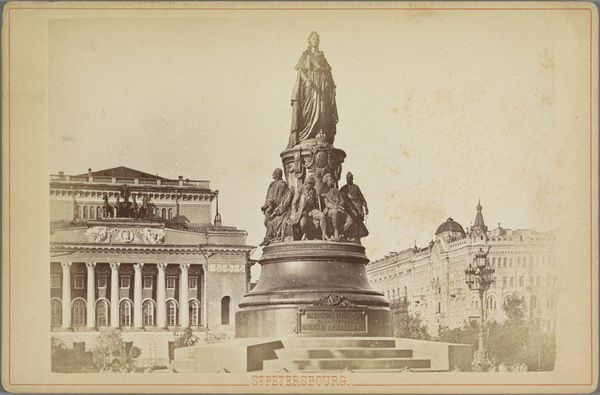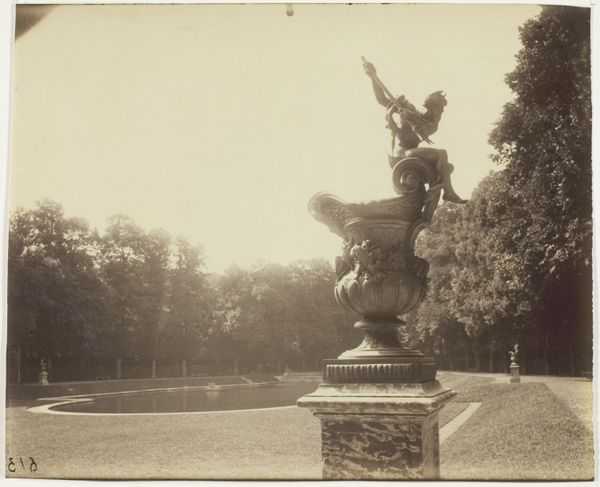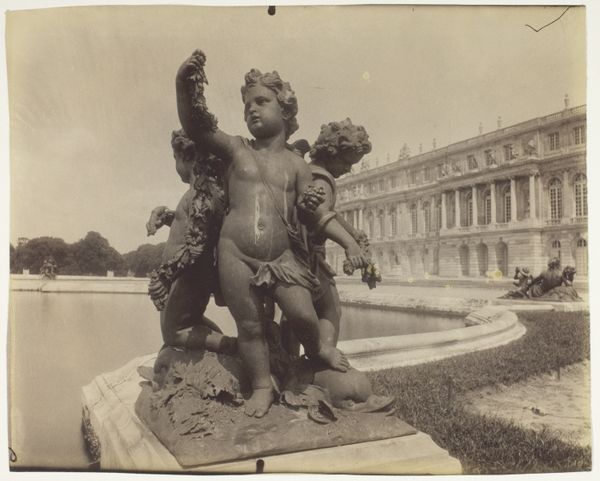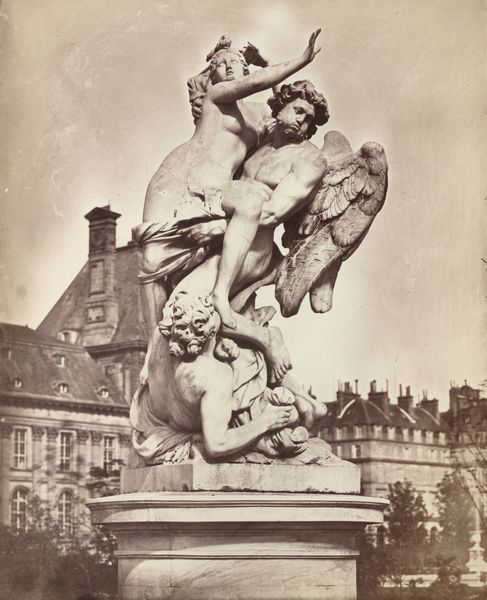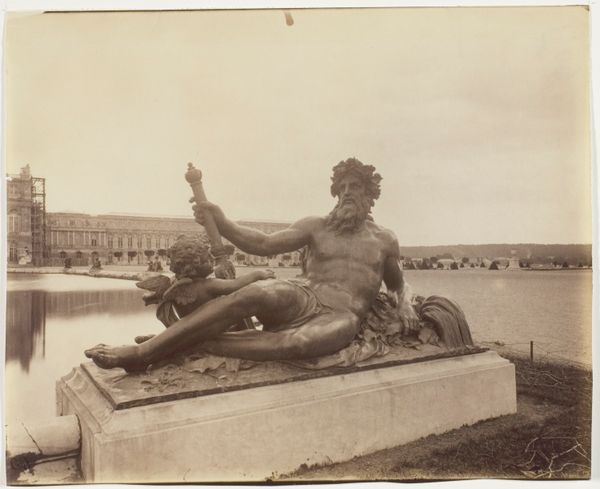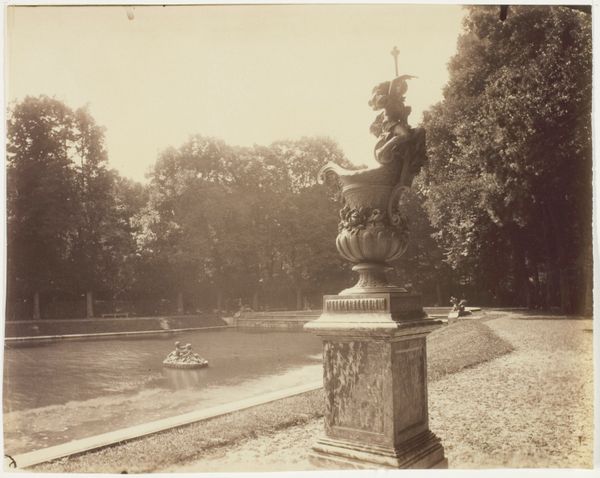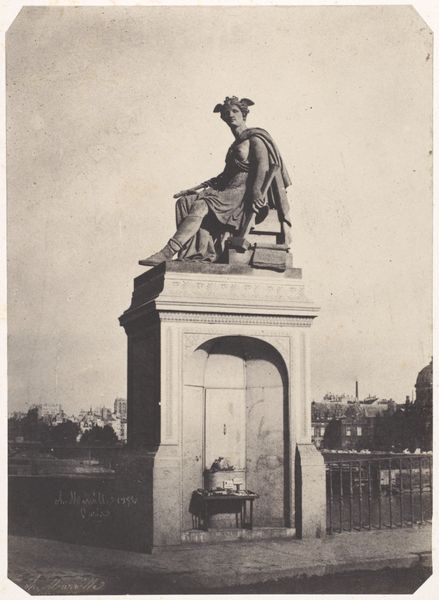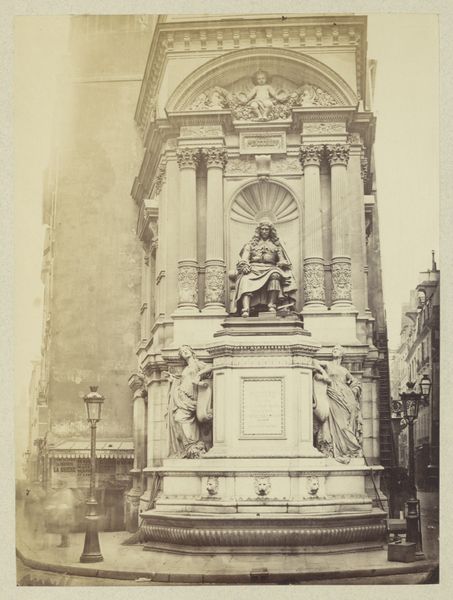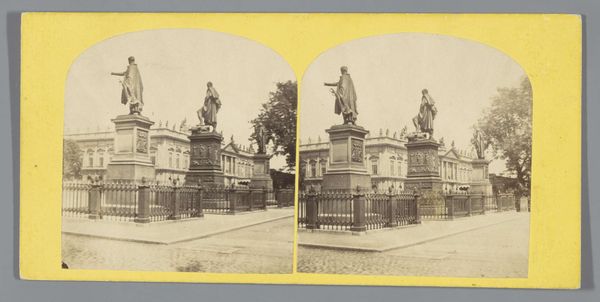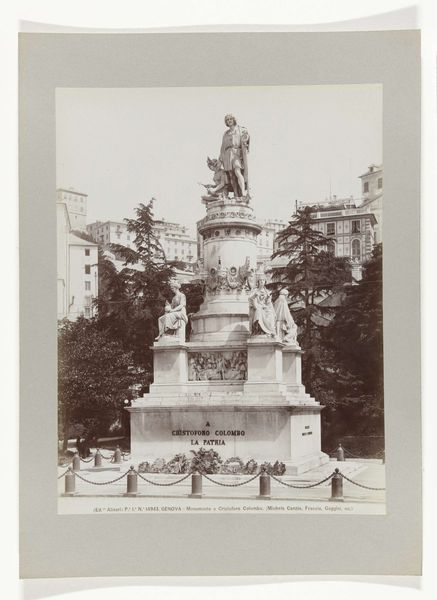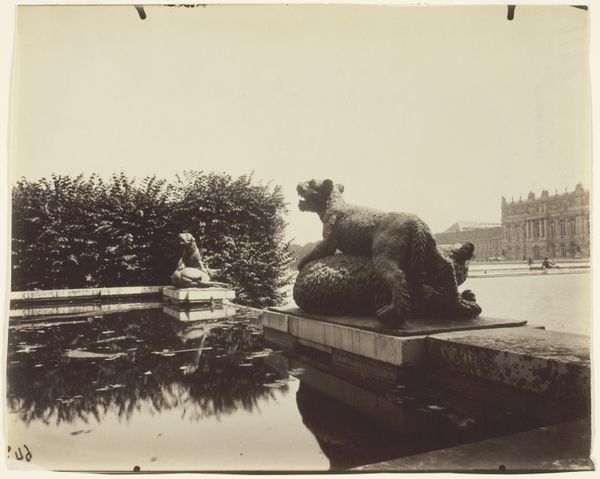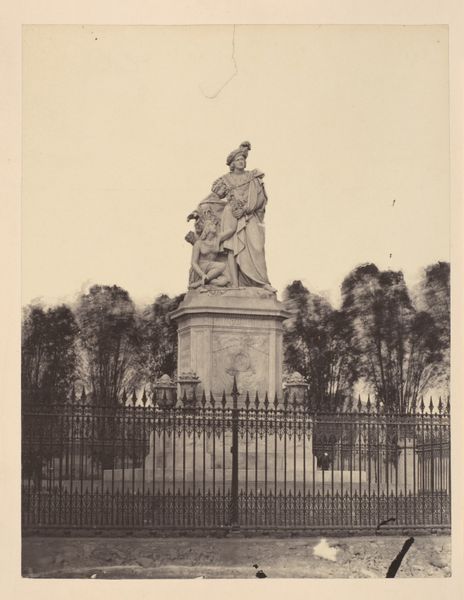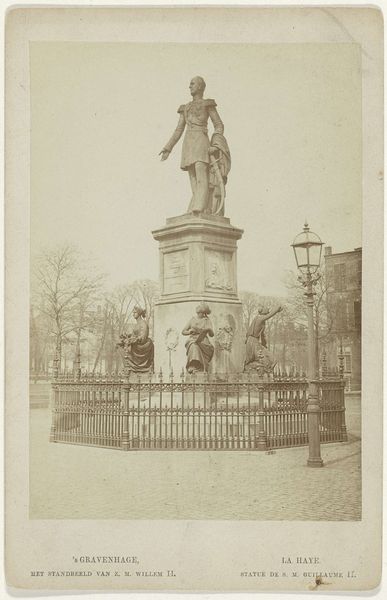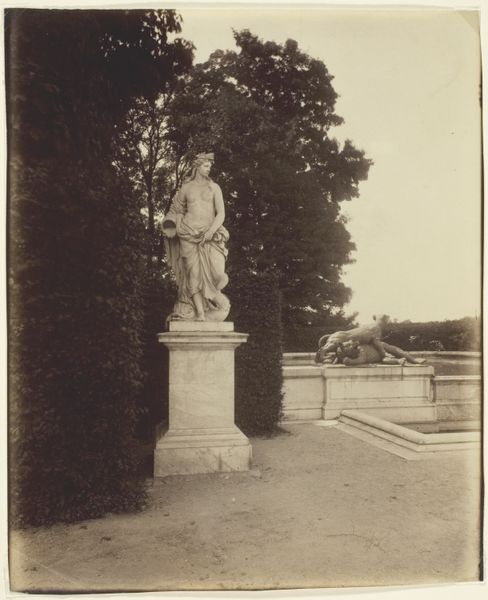
photography, sculpture, gelatin-silver-print
#
neoclacissism
#
greek-and-roman-art
#
landscape
#
figuration
#
archive photography
#
photography
#
historical photography
#
sculpture
#
gelatin-silver-print
#
19th century
#
history-painting
#
academic-art
#
male-nude
#
realism
Dimensions: Image: 35.3 x 43.5 cm (13 7/8 x 17 1/8 in.)
Copyright: Public Domain
Curator: Charles Nègre created this photograph, titled "Spartan Soldier," in 1859. He used a gelatin-silver print. It's currently housed right here, at the Metropolitan Museum of Art. Editor: It possesses such a poignant, romantic grandeur. The muscular figure is so idealized, dramatically lit. There is something melancholy about his posture that really captures your attention. Curator: Nègre’s process really blends classical themes with the new medium of photography. The starkness of the silver print, and his choice of an outdoor setting against the architectural backdrop, emphasizes a dialogue between historical statuary and the rapid industrial advancements. What labor went into carving the original statue? And what about the labor needed to set up such a photoshoot back in the mid 19th century? Editor: It’s not just about technological shifts. This work carries so much symbolism. The raised arm and torch that he’s carrying is reminiscent of classical ideals, of course – victory, enlightenment. Even the classical motif of the male nude links us to earlier times, and brings with it baggage of meaning and remembrance that's very strong. What stories are invoked, of physical strength and civic duty, for example? Curator: That connection to classicism is so interesting when you consider photography's claim to 'realism'. Did the controlled studio environment provide a blank slate that was anything but objective? How was this Spartan 'constructed' through very specific industrial methods of that era? Editor: But is 'realism' truly Nègre’s intention? Or, has Nègre evoked something more potent, more evocative, by engaging the established visual language of history? This combination makes the symbolism all the more resonating. The statue gains a new power when rendered through the eye of a camera. Curator: I would tend to agree. It makes you think about photography's ability to not simply reflect reality but, much like sculpture, create and reinforce symbolic weight through material processes. It captures and yet shapes the cultural narratives associated with those forms of masculinity from a time that even for Nègre was ancient. Editor: Indeed, seeing how enduring icons shift through representation keeps them culturally potent. Even in translation via different medium the message gets clearer and sharper! Curator: Thank you. Editor: Pleasure to have offered my insight.
Comments
No comments
Be the first to comment and join the conversation on the ultimate creative platform.
